I love the special buzz that comes with an Olympic year and I can’t believe that the Rio Olympic Games are now only 6 months away! Having recently returned from a three-week training stint at Falls Creek with crowds of runners, I am really looking forward to the season ahead. The incredible results and Aussie Olympic qualifying performances across a number of events already this year have fuelled my excitement and that burning desire to get the most out of myself.
Fuelling the body that holds the desire…
In a year where athletes across the globe leave no stone un-turned in a venture to find the best performance within themselves, the one per centers mean a lot. Strength and conditioning, mobility, sports psychology, exercise physiology, physical health, planning, tactics and nutrition all become vital considerations in an overall training plan. In 2013 I wrote about the topic of nutrition. Three years later, I still consider its role as one of the most important in my overall wellbeing and performance. Whilst food can certainly get old, the subject itself cannot… so here I am again, covering one of my favourite topics and ultimate hobbies – FUELLING.
“Do you have a special diet?” “What is your fuelling strategy on race day?”
“How far out from a session do you eat?”
Without fail, the most commonly asked questions at work, speaking events, school visits and when meeting other passionate runners, revolve around nutrition. Like running training, there is no ‘absolute winning formula’ when it comes to diet. This is perhaps why the topic induces so much curiosity and forever keeps the minds of athletes, health professionals and the public buzzing. My understanding about nutrition has certainly evolved and in particular, I am more aware of which fuelling strategies are effective for me. Consulting a sports dietitian, reading, talking to fellow athletes and reflecting on my own experiences have contributed to this understanding and I would recommend all of these strategies anyone!
After a couple of consults with Olivia Warnes at the South Australian Sports Institute in late 2012, I realized that what I had been eating was working quite well but I had a lot to learn about the timing of consumption. A calculated approach towards “what to eat when” and “how much to have” can maximize the benefits of training sessions and facilitate recovery for the next session. I wouldn’t say that I have a special diet but I certainly hold a few key beliefs that guide my choices.
How I see it…
Appropriate fuelling can be a very strong asset for any athlete. A healthy and balanced diet that meets an athlete’s energy demands can help to maintain a strong body, immune system, mind, happiness and motivation.
- What you consume before training affects your level of comfort and how much energy you have available during that session. Pre-session, I choose a snack that is high in carbohydrates and that I know, from past experience sits well in my stomach.
- The foods and liquids (fuel) that you take on during an endurance race allow the engine (your body) that you have carefully tuned over many months, to operate at its best. I practice my fuelling strategy in training so that on race day I can be confident that if I stick to my fuelling plan, my body will do what I ask of it.
- Your meal choices after training have a significant impact on how well you recover and adapt to the work you have just carried. I am a big believer in consuming a combination of quality protein and carbohydrates as soon as possible after a key session or long run, to kick-start the recovery/tissue-healing process.
“Is your diet different now that you run more?”
Admittedly, I have tweaked my nutritional approach as my running career has progressed however the basic principles are the same. The food choices I make on a daily basis stem from 1) my upbringing in Naracoorte, 2) what I believe to be good for me, 3) what my appetite is telling me and importantly, 4) what I enjoy. I come from a family of five people and more pets than I could ever count, all of whom love food equally. My parents (I’ll give Mum most of the credit here) love to prepare wholesome meals that involve variety, fresh food and plenty of it. Hokkien noodle stir-fries, meat and three veg, pasta bakes and barbeques were regulars on the menu. In our family, the saying goes that there can never be too much food but there would never be waste. Leftovers for lunch the next day are still my favourite!
These days I tend to prepare most of my main meals at home throughout the week and I enjoy dining out on the weekends. A glass of wine here and there does not seem to affect my training, which is fortunate given the large number of weddings and social events in recent years. To provide a snap shot of the tucker that keeps me (as a distance runner) ticking, I kept a record of my meals during a week of training at Falls Creek! It is important to note that this was during quite a heavy period of training at moderate altitude. Before any period of altitude training, my Sports Dietitian reinforces the importance of consuming foods rich in iron (a key component of red blood cells) and vitamins and minerals (to support immune function). During heavy periods of training and particularly when at altitude, it is also helpful to ‘up the carbs’ to compensate for the metabolic changes and body’s increased energy demands. My appetite generally leads me that way anyway!
Also worth noting is that different strategies work for different bodies and this is purely what I find works well for me. I hope this summary is useful in some way and I wish you all the best for your upcoming training block or races.
Jess : )
A GENERAL SESSION DAY AT FALLS CREEK:
Pre-session (30-60 minutes beforehand) – Same as PRE-RACE but I allow time to eat 2 hours beforehand
– 1-2 pieces of toast with honey + a few slices of banana with cinnamon
OR
1x weak instant coffee with a dash of milk (If I feel like it).
Post-session (as soon after as possible)
- – My favourite pancake: 1 banana, 1 egg, cinnamon, small handful of muesli (depending on how hungry I am), chia & linseed blend, half a scoop of vanilla whey protein powder. Mix together to create batter and cook slowly on pan. Serve with high protein/low carb yoghurt i.e. Chobani and berries.OR
- – Porridge with milk, 1x banana, a handful of seed + nut mix & yoghurt
Late Morning: – Large cappuccino

Lunch (at least 2 hours before afternoon run):
– 2 thick slices of sourdough or toast with avocado, mushrooms, cherry tomatoes, feta and either salmon/tuna/chicken. Place under the grill!

Snacks (as needed):
– Mixed nuts, rice crackers, a piece of fruit, Muesli bar, carrot & hummus, toast with butter or avocado, yoghurt with muesli sprinkled on top, chai latte
Dinner (see Day 1-7 below):
– Example: Grilled salmon fillet with stir-fried vegetables and steamed rice Before bed (one of the following):
- – Stewed apples with toasted muesli on top and yoghurt
- – Berries and yoghurt with muesli sprinkled on top
- – A few pieces of dark chocolate (usually Lindt!)
- A GENERAL RECOVERY RUN/GYM DAY Very similar to the above however I may not eat before the run and if I do, it is generally something lighter i.e. 1 piece of toast with honey. I tend not to be as hungry on non-session days so may not consume as many snacks throughout the day. If I have a key session the following morning, I make sure that I incorporate carbohydrates into my evening meal.
- EVENING MEALS DURING A WEEK AT FALLS CREEKDay 1: Salmon fillet and stir-fried vegetables with rice Day 2: Teriyaki Chicken pizza
Day 3: Green Chicken Curry
Day 4: Burritos with beef mince and saladDay 5: Chicken burger and oven-roasted sweet potato
Day 6: Beef Stir Fry with vegetables and thin egg noodles
Day 7: Turkey mince and vegetables with pasta & a Bolognese sauce

For more from Jess, visit www.jessicatrengove.com.au
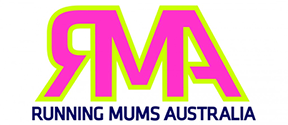

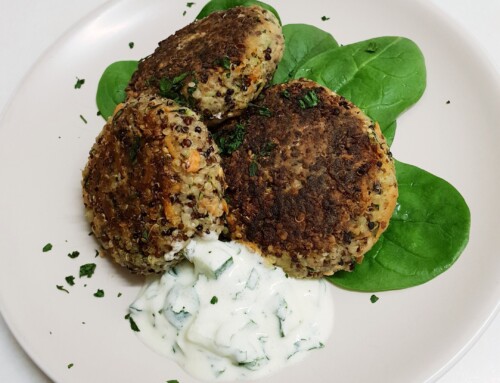
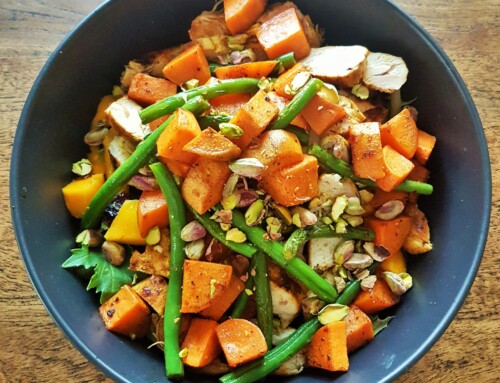
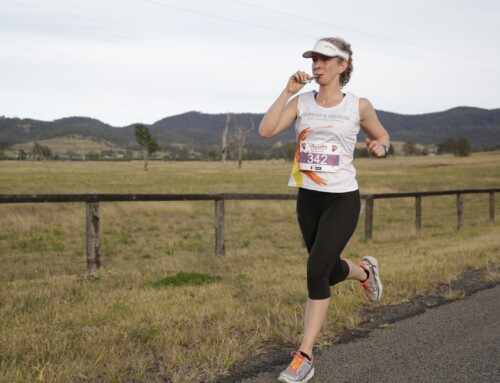
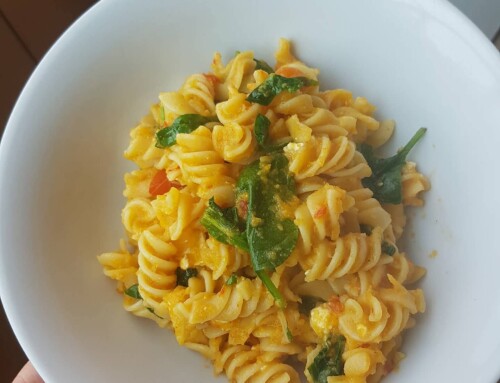
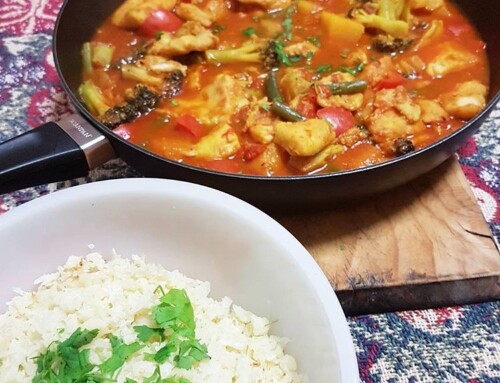
Leave A Comment